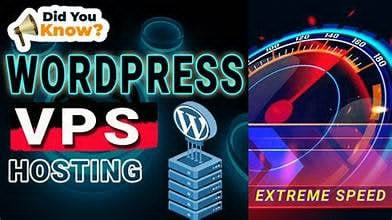WordPress Virtual Private Server (VPS) hosting is a robust solution for businesses and individuals seeking more control, power, and reliability than traditional shared hosting can offer. VPS hosting provides a middle ground between the simplicity of shared hosting and the complexity of dedicated servers, making it a popular choice for growing websites. This guide explores the benefits, setup process, and tips for optimizing your wordpress vps hosting.

Post Contents
Benefits of WordPress VPS Hosting
Enhanced Performance
One of the primary advantages of VPS hosting is enhanced performance. Unlike shared hosting, where multiple websites share the same server resources, a VPS allocates specific resources to each user. This means your website can handle more traffic and run applications more efficiently without being affected by other sites on the server.
Increased Control and Customization
VPS hosting offers greater control over your server environment. You can install custom software, choose your operating system, and configure server settings to suit your needs. This level of control is ideal for developers and tech-savvy users who require specific configurations for their websites.
Improved Security
With VPS hosting, your site is isolated from other users, which reduces the risk of security breaches. You have the ability to implement custom security measures, such as firewalls, DDoS protection, and regular backups, providing a more secure environment for your website.
Scalability
VPS hosting is highly scalable. As your website grows, you can easily upgrade your resources, such as CPU, RAM, and storage, without experiencing downtime. This flexibility ensures that your site can handle increased traffic and data demands as your business expands.
Setting Up WordPress on a VPS
Choosing a VPS Provider
The first step in setting up WordPress on a VPS is selecting a reliable hosting provider. Popular VPS hosting providers include DigitalOcean, Linode, and Vultr. Consider factors such as pricing, customer support, and available features when making your decision.
Selecting the Right Plan
Choose a VPS plan that fits your website’s current needs and allows for future growth. Consider the amount of CPU, RAM, and storage required for your site to run smoothly. Most providers offer various plans, so you can start with a basic package and upgrade as needed.
Installing the Operating System
Once you have chosen a provider and plan, you will need to install an operating system on your VPS. Common choices for WordPress include Ubuntu, CentOS, and Debian. These Linux distributions are popular for their stability, security, and compatibility with WordPress.
Setting Up the LAMP Stack
To run WordPress, you need to set up a LAMP stack, which consists of Linux, Apache, MySQL, and PHP. Follow these steps to install and configure each component:
- Linux: Your chosen operating system.
- Apache: Install Apache using the package manager for your OS (e.g., sudo apt-get install apache2 for Ubuntu).
- MySQL: Install MySQL for database management (e.g., sudo apt-get install mysql-server).
- PHP: Install PHP to run WordPress (e.g., sudo apt-get install php libapache2-mod-php php-mysql).
Downloading and Installing WordPress
After setting up the LAMP stack, download the latest version of WordPress from the official website. Extract the files to your web server’s root directory and configure the wp-config.php file with your database information. Complete the installation by visiting your website in a browser and following the on-screen instructions.
Optimizing Your WordPress VPS
Caching
Implementing caching can significantly improve your website’s performance. Use caching plugins like W3 Total Cache or WP Super Cache to store static versions of your pages and reduce server load.
Content Delivery Network (CDN)
A CDN distributes your website’s content across multiple servers worldwide, reducing load times for visitors by serving data from the closest server. Popular CDN services include Cloudflare and Amazon CloudFront.
Regular Updates and Maintenance
Keep your WordPress installation, themes, and plugins up to date to ensure optimal performance and security. Regularly monitor your server’s performance and make necessary adjustments to maintain smooth operation.
Conclusion
WordPress VPS hosting offers numerous benefits, including enhanced performance, increased control, improved security, and scalability. By carefully selecting a VPS provider, configuring your server, and optimizing your setup, you can create a robust and reliable environment for your WordPress website. Whether you’re running a small blog or a high-traffic business site, VPS hosting provides the resources and flexibility needed to support your growth.